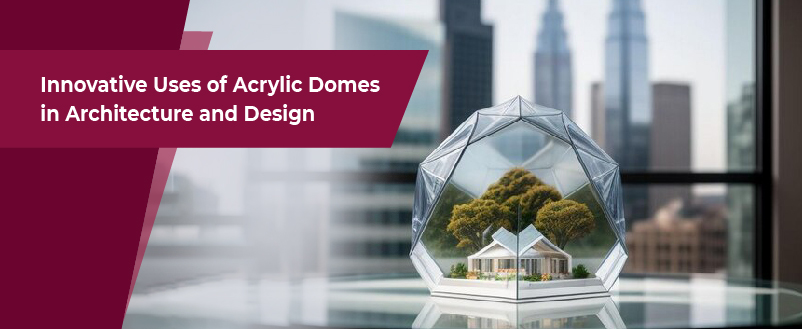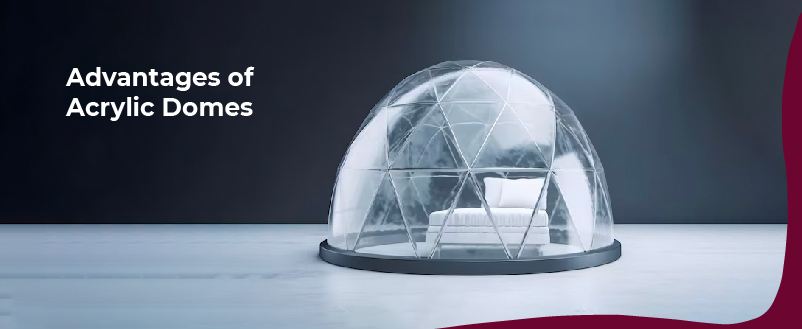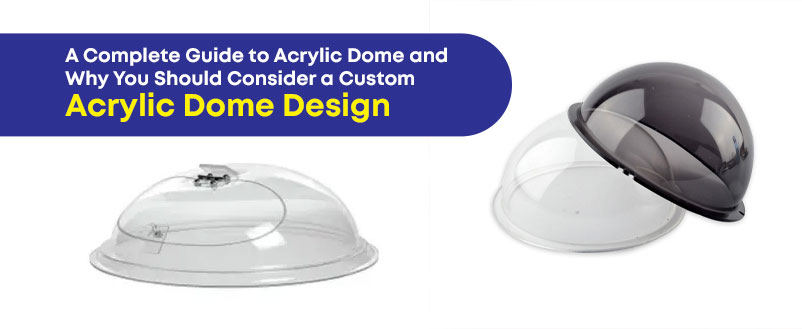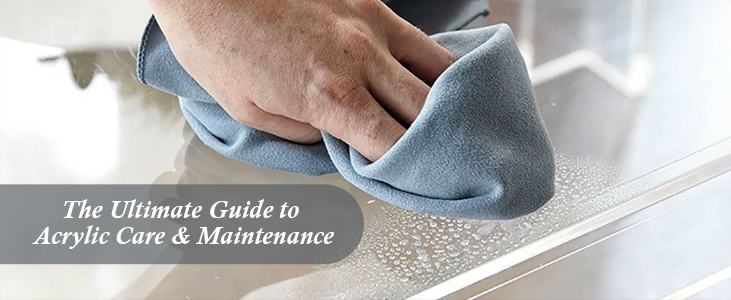
In the realm of architecture, acrylic domes represent a cutting-edge synthesis of form and function. These wide ranges of transparent structures, typically hemispherical or geodesic in shape, are crafted from durable acrylic material. This transparent material offers a unique blend of transparency, versatility, and structural integrity, making it ideal for a wide array of innovative applications.
As the architectural landscape evolves, embracing novel materials and design concepts becomes increasingly imperative. Innovation serves as the cornerstone of progress in architecture and design, driving forward-thinking solutions to contemporary challenges. This blog aims to delve into the variety of applications offered by acrylic domes, exploring their innovative applications across various sectors and highlighting their potential to shape the future of acrylic dome architecture.
Table of Content
Historical Context and Evolution
Domes have a rich historical lineage, dating back to ancient civilizations like the Romans and Byzantines, who employed them in monumental structures such as temples and cathedrals. During the 20th century, this architectural form evolved, finding expression in diverse cultures worldwide being a popular choice. The introduction of acrylic material revolutionized architectural design, offering a lightweight, durable alternative to traditional building materials.
This shift catalyzed the evolution of domes from static, purely structural elements to dynamic, transparent enclosures. Today, acrylic dome designs are at the forefront of modern architecture, facilitating innovative applications ranging from sustainable eco-domes to futuristic observatories, marking a paradigm shift in architectural possibilities.
Advantages of Acrylic Domes

Durability and Weather Resistance:
Acrylic material is a highly durable material and transparent material, making acrylic domes highly resistant to impact, cracking, and weathering. Unlike glass, acrylic is less prone to shattering, making it a popular choice, especially in areas prone to seismic activity. Additionally, acrylic domes like geodesic domes which were first built by R. Buckminster Fuller can withstand exposure to harsh weather conditions such as UV radiation, extreme temperatures, and moisture, ensuring longevity and minimal maintenance requirements.
Versatility in Design and Shape:
One of the most appealing features of acrylic domes is their versatility in design and shape and hence have a range of applications. Acrylic can be molded and fabricated into various forms, allowing architects and designers to create custom domes tailored to specific project requirements. Whether it’s a sleek, modernist design or a curvaceous, organic form, acrylic domes offer endless possibilities for creative expression, enabling the realization of innovative and visually striking architectural visions.
Transparency and Light Transmission:
Acrylic’s inherent transparency allows for excellent light transmission, making acrylic domes ideal for spaces like building greenhouses. It is owing to the reason that natural light is desired and to maintain indoor temperatures for exotic plants since it need comfortable temperature for its growth. These days it is seen as increasingly used for event spaces.
The spherical shape of acrylic ensures that occupants can enjoy unobstructed panoramic views, creating a sense of openness and connection with the outdoors. Moreover, acrylic can be tinted or coated to control light transmission and minimize glare, enhancing comfort, minimal energy costs, and usability in interior spaces. The design of geodesic domes plays a key role in superior air circulation.
Structural Integrity and Safety:
Despite its lightweight nature, acrylic boasts impressive structural integrity, supporting significant loads and environmental issues like strong winds while maintaining stability and safety. The wide variety of acrylic dome shapes in Abu Dhabi are engineered to meet stringent structural standards, ensuring compliance with building codes and regulations. Additionally, acrylic’s high impact resistance and shatterproof properties enhance occupant safety, mitigating the risk of injury in the event of accidental impacts or vandalism.
Innovative Applications
Acrylic domes have sparked a wave of innovation in architecture and design, opening up a range of applications for creative and functional applications. Check out the guide to acrylic domes for more details. Here are five innovative ways acrylic domes are being utilized across various sectors:
1. Sustainable Architecture: Greenhouses and Eco-Domes
Acrylic domes are revolutionizing sustainable architecture by serving as key components in greenhouses and eco-domes. These structures harness natural light and provide optimal growing conditions for plants, reducing the need for artificial lighting and heating. Acrylic transparency allows sunlight to penetrate deep into the interior, promoting photosynthesis and plant growth.
Additionally, acrylic’s weather-resistant properties ensure durability and protection for delicate vegetation against harsh environmental conditions. Eco-domes constructed with these sustainable materials provide self-sustaining ecosystems through natural air circulation, offering natural habitats for flora and fauna while minimizing energy consumption and carbon footprint.
2. Recreational Spaces: Planetariums and Observatory Domes
Acrylic domes transform recreational spaces into immersive experiences, particularly in planetariums and observatory domes. Their transparent construction allows stargazers to enjoy unobstructed night sky views, creating a sense of awe and wonder. Acrylic’s optical clarity ensures minimal distortion, providing an authentic stargazing experience. Moreover, these domes can incorporate advanced projection technologies to simulate celestial phenomena, enhancing educational and entertainment value. Whether it’s exploring distant galaxies or studying astronomical phenomena, acrylic domes offer unparalleled opportunities for discovery and exploration.
3. Commercial Buildings: Shopping Malls and Atriums
Acrylic domes are making a bold statement in commercial buildings, particularly in shopping malls and atriums. These domes serve as focal points, creating striking architectural features that draw in visitors and shoppers. Their transparent design floods interior spaces with natural light, creating a welcoming and inviting atmosphere. Additionally, acrylic domes can incorporate intricate geometric patterns or decorative elements, adding visual interest and sophistication to commercial spaces. Whether it’s a soaring atrium or a skylit shopping arcade, acrylic domes elevate the aesthetic appeal and functionality of commercial buildings, enhancing the overall shopping and leisure experience for patrons.
4. Residential Architecture: Rooftop Gardens and Skylights
In residential architecture, acrylic domes are being utilized to create rooftop gardens and skylights that enhance the quality of life for occupants. Rooftop gardens provide urban dwellers with green spaces for relaxation and recreation, while also contributing to environmental sustainability. Acrylic domes enclose these rooftop gardens, protecting them from the elements while allowing ample sunlight to nurture plant life.
Similarly, acrylic skylights introduce natural habitats and natural air circulation into interior spaces, reducing reliance on artificial lighting and improving energy efficiency. This self-supporting structure adds architectural interest to residential properties, creating light-filled and inviting living environments. Buckminster Fuller Dome is a major choice for architects when creating designs for innovative building solutions.
5. Art Installations: Exhibition Spaces and Sculptural Domes
Artists and designers are embracing the range of applications of acrylic domes as versatile mediums for creating immersive art installations and sculptural domes. These domes serve as dynamic exhibition spaces that engage viewers on a sensory level. Acrylic’s transparency and light transmission properties allow artists to play with light, color, and perspective, transforming ordinary spaces into captivating environments. Whether it’s a temporary installation at an art gallery or a permanent sculpture in a public plaza, acrylic domes offer endless opportunities for artistic expression and experimentation.
Challenges and Considerations
Cost and Maintenance:
Acrylic domes can be more expensive to install initially compared to traditional building materials like glass or metal. The cost of materials, fabrication, and installation must be carefully evaluated within the project budget. Additionally, ongoing maintenance is essential to ensure the longevity and performance of acrylic domes. Regular cleaning and inspection are necessary to prevent dirt buildup, scratches, and discolouration, which can detract from the aesthetics and transparency of the domes.
Environmental Impact and Sustainability Building Material:
Despite their energy-efficient properties, the production of acrylic materials has environmental implications, including energy consumption and greenhouse gas emissions. Architects and designers must consider the environmental impact of sourcing and manufacturing acrylic and explore sustainable alternatives where feasible. Additionally, the lifespan and recyclability of acrylic domes should be taken into account to minimize their environmental footprint over time.
Structural Engineering and Design Constraints:
Acrylic domes present a range of design challenges due to their curvature and transparency. Designing domes that can withstand wind loads, snow loads, and seismic forces requires careful consideration of structural stability and reinforcement. Moreover, the structural integrity of acrylic domes must be evaluated to ensure compliance with building codes and safety standards. Designers must also navigate design constraints such as material thickness, curvature radius, and support systems to achieve both aesthetic and functional objectives.
Integration with Surrounding Architecture:
Acrylic domes should harmonize with the surrounding built environment to enhance visual coherence and continuity. Integrating domes seamlessly into existing architectural styles and materials requires thoughtful design and detailing. Factors such as scale, proportion, and facade treatment must be carefully considered to ensure that acrylic domes complement rather than dominate the architectural composition. Additionally, consideration should be given to how natural light and views through the domes interact with interior spaces and external surroundings to create a cohesive and immersive experience.
Future Trends and Possibilities
As technology continues to evolve, the future of acrylic domes with architectural skylights holds exciting possibilities. Advancements in Material Science and Technology will lead to stronger, lighter, and more sustainable acrylic materials, expanding the scope of architectural applications. Integration of Smart Features and IoT in Acrylic Domes will enable enhanced functionality, such as automated climate control and interactive experiences, enriching user engagement and comfort.
Collaborative and Interdisciplinary Approaches in Design will foster innovative solutions by integrating expertise from diverse fields, pushing the boundaries of creativity and functionality. Potential for Space Exploration and Colonization could see acrylic domes utilized in extraterrestrial habitats, providing shelter and protection in off-world environments.
also read: Future Trends in Acrylic Fabrication What’s Next?
Conclusion
The innovative building material applications of acrylic domes underscore the transformative
power of architectural innovation. Their versatility and potential to reshape the built environment are undeniable, offering sustainable, visually striking solutions across various sectors.
As we look to the future, it’s imperative to recognize the importance of embracing innovation in architecture and design, driving forward-thinking solutions to address contemporary challenges. Architects, designers, and engineers are called upon to harness the full potential of acrylic domes and other futuristic approaches, shaping a built environment that is both functional and inspiring for generations to come.
Pleasant Acrylic specializes in acrylic industry, manufacturing and upholstery in Dubai, offering all precision engineering and tooling from Acrylic Design Dubai As the outstanding acrylic dome suppliers in Dubai, they offer high quality products for a variety of applications. Their expertise extends to acrylic plastics in Dubai, ensuring the products meet the highest standards of sustainability and aesthetics.

